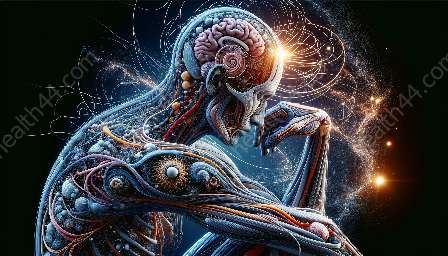The study of musculoskeletal anatomy is crucial for anyone working in the field of health education and medical training. It is an essential topic for understanding the structure and function of the human body, particularly the musculoskeletal system, which includes the muscles and bones. This topic cluster will explore the components of the musculoskeletal system, their functions, and their significance in maintaining overall health.
Components of the Musculoskeletal System
The musculoskeletal system consists of the skeletal system and the muscular system. The skeletal system includes bones, cartilage, ligaments, and tendons, while the muscular system comprises skeletal muscles, smooth muscles, and cardiac muscles. Both systems work together to support the body, enable movement, and protect vital organs.
Bones
The bones in the human body serve several essential functions. They provide structure, protect vital organs, support movement, store minerals, and produce blood cells. There are 206 bones in the adult human body, each with specific shapes and functions. Understanding the structure and function of bones is crucial for health professionals in diagnosing and treating various musculoskeletal conditions.
Muscles
The muscles in the human body are responsible for movement, stability, and generating heat. Skeletal muscles are attached to bones and work in pairs to create movement at the joints. Understanding the organization and function of muscles is essential for medical professionals to assess and treat musculoskeletal injuries and disorders.
Functions of the Musculoskeletal System
The musculoskeletal system performs several critical functions that are essential for overall health and well-being. These functions include:
- Support and structure: The skeletal system provides the framework that supports and shapes the body.
- Movement: Muscles work in coordination with the skeletal system to enable various types of movement.
- Protection: Bones protect vital organs such as the brain, heart, and lungs.
- Production of blood cells: The bone marrow within certain bones is responsible for producing red and white blood cells, as well as platelets.
- Storage of minerals: Bones store minerals such as calcium and phosphorus, which are essential for the body's metabolic processes.
Importance of Musculoskeletal Anatomy in Health Education and Medical Training
Understanding musculoskeletal anatomy is crucial for anyone involved in health education and medical training. For aspiring healthcare professionals, a thorough understanding of musculoskeletal anatomy is essential for diagnosing and treating a wide range of conditions, from fractures and sprains to musculoskeletal diseases and disorders.
Medical training programs often include in-depth study of musculoskeletal anatomy to ensure that future physicians, nurses, physical therapists, and other healthcare providers have the knowledge and expertise to provide effective care to patients with musculoskeletal conditions. Health education programs also emphasize the importance of musculoskeletal anatomy to promote overall health and wellness.
Conclusion
Musculoskeletal anatomy is a fundamental topic in anatomy, health education, and medical training. Understanding the components and functions of the musculoskeletal system is essential for anyone working in the healthcare field. By gaining a comprehensive knowledge of musculoskeletal anatomy, healthcare professionals can effectively diagnose, treat, and support patients with musculoskeletal conditions, contributing to overall health and well-being.


